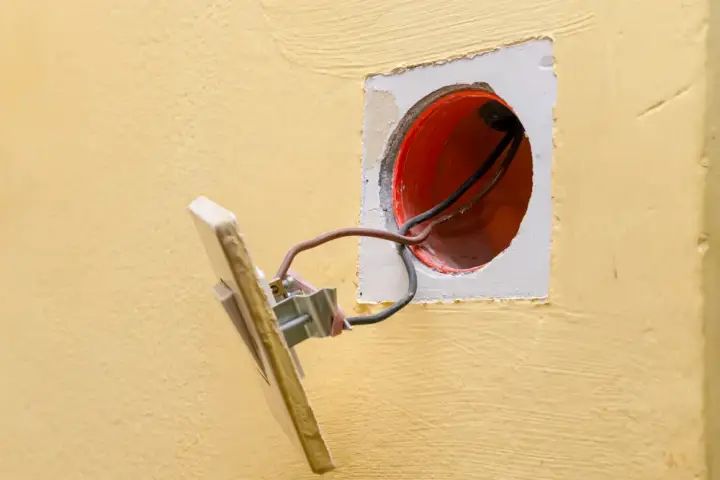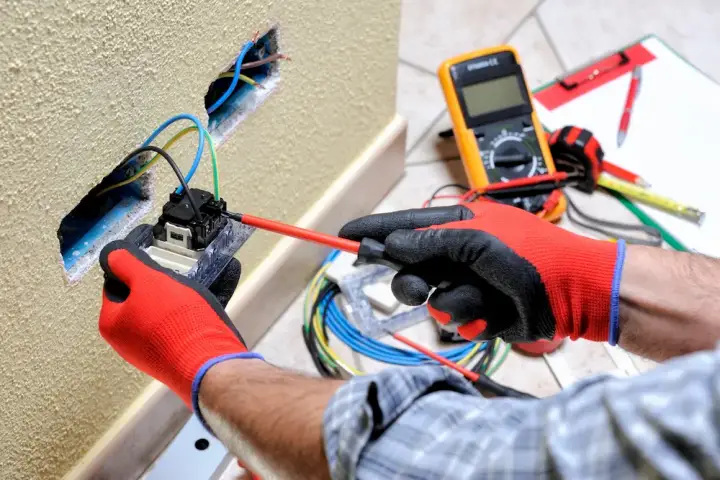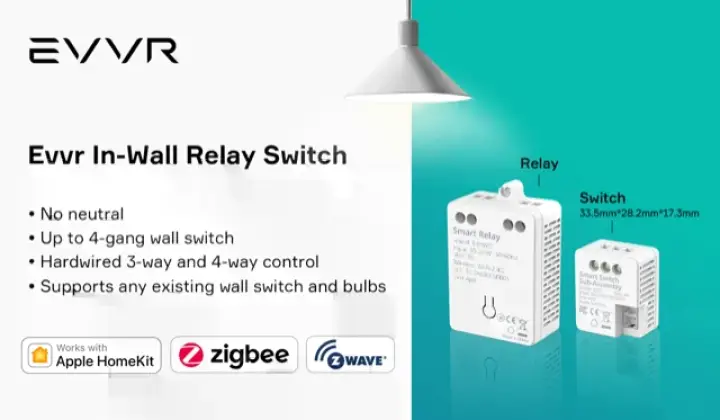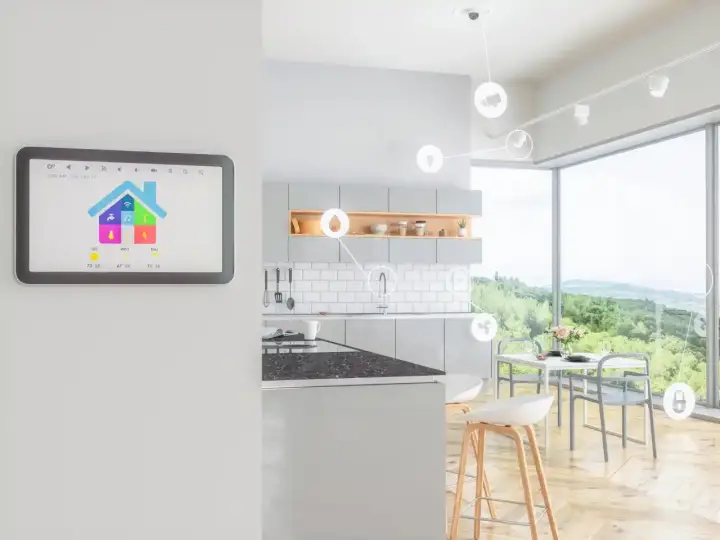No Neutral Wire? Top 3 Solutions for Smart Lighting
Updated on 22nd Sep 2022 20:37 in General, Smart
There is often a lot of confusion over the neutral wire within smart homes. This is because many devices, especially smart light switches, require a neutral wire to function correctly. However, when homeowners remove the light switch, there is no neutral wire in the box! What gives? Is there any way to install a smart switch despite this? Yes, but it involves some planning and careful consideration.

Disclaimer: This post contains affiliate links. As an Amazon Associate, I earn from qualifying purchases.
Table of Contents
Warning! Electrical work can be dangerous, and if done incorrectly, could have fatal consequences. Do not attempt anything you are not trained to do and always consult with a licensed electrician before any work.
What is the neutral wire for?
The neutral wire is the electricity's return path after it has entered a load, which is a fancy way of saying any device that uses power. An electrical circuit will always have two wires going to and from equipment needing to be powered. This is why plugs have two main prongs, the third being a safety mechanism called ground or earth, which is not the same as the neutral wire.
To power a lamp, two wires will come from the wall into the fixture that will connect these wires to the bulb via a socket. The colour is typically white or grey in North America, but there are a lot of different regulations depending on your region, so be sure to check what your local laws are. The neutral wire is as important as the hot wire, they function together as a pair to power things, and both are needed for the light to turn on.
This is just a very simple one
Why is my switch missing a neutral wire?
While this will be vastly different depending on where you live, the electrical code in North America has generally been changed in recent history to require a neutral wire in light switch boxes. The reason is a direct result of the increasing popularity of "control devices" which are also known as smart switches. As a result of this rule being relatively recent, many older homes will be wired in a simpler way that does not include a neutral wire.
As with the colour of the wire, the specific electrical code is different everywhere, so it is best to look up your local regulations or speak with a licensed electrician. The reason the neutral wire will sometimes be missing is that mechanical switches only need to be placed between the hot and the light. When the switch is turned on the current is allowed to flow through the hot wire, into the light, and out the neutral. Once turned off, there will be no current flow in the circuit, and nothing will be powered on.
has access to the hot wire.
The ground wire has been omitted for simplicity.
Can you use ground as a neutral for smart switches?
The ground wire is often green and will be connected to the metal casing of the light switch. Almost every configuration will have a ground wire connected to the metal casing of the switch. While connecting the neutral of a smart switch to ground might work, never do this! The reason it will work is that ground is often connected to neutral in the electrical panel, meaning it will be at a very similar voltage allowing current to flow from hot to ground.
As mentioned, this will power the smart switch but can be very dangerous and should not be attempted. Neutral is the designed return path for current to flow through and using the ground wire for this purpose will remove a critical safety mechanism. In fact, the ground wire should never have current flowing through it except in fault conditions such as damaged wiring or water getting into some equipment. The ground wire exists to provide a way for the electricity to get back to "ground" safely.
In the absence of a ground wire, an unknowing human who touches a faulted circuit could bridge the hot to ground through their body, leading to severe injury and even death. Another problem with this approach is that Ground Fault Circuit Interrupters (GFCI) and Residual Current Devices (RCD) will trip once the switch draws more than a few milliamps as that current will be detected as a fault.
What could be worse? If something should happen to your ground wiring such that the cable somehow gets disconnected from the ground connection at the service panel, anything grounded will now become "hot". Any equipment that has a grounded chassis will now become a shock waiting to happen. As someone touches the metal casing, the path through ground into hot via the switch is now closed, possibly delivering a nasty shock.
The short answer is: never mess with the grounding of electrical appliances. It may seem convenient to use the ground wire instead of bothering with installing a neutral or coming up with other solutions, but this shortcut could be fatal. When in doubt, consult a licensed electrician.
Why do smart switches need neutral anyways?
Smart switches are different from mechanical switches in that they can usually be operated via the button on the wall or a command sent wirelessly from a controller. The requirement to continually communicate with the controller is what introduces the need for a neutral wire, as the switch must stay energised continuously to be able to keep its connection alive. Without a neutral, the device would immediately turn off once you turn off the light as there would be no more power for it to communicate.
What are the options without a neutral wire?
When it comes to installing a smart switch without a neutral wire, there are a few options with different costs and complexities. Most of the cheaper options also have some significant drawbacks that should be considered before settling on any one of them.
Adding a neutral wire to the switch box
One of the more apparent solutions happens to also be one of the more difficult ones to implement. Depending on the exact wiring of your switch, adding a neutral wire could be as simple as pulling it out from behind the box, or as complicated as wiring a new run from the lamp into the switch.
The main thing to check with this method is that you do indeed have a "switch loop" configuration that wires the neutral only to the fixture. It is quite common for the entire set of wires to get through the switch box before going off to the light. When wired like this, the neutral may have been far out of the way to reduce clutter as regular switches don't need it.
However, if you are less lucky and the wires go to the light first with a set of wires going to the switch, some wiring changes will need to be made. While changing out a switch can be performed reasonably easily, rewiring a light is much more involved and should be done by a professional to ensure it is done correctly. It is very easy to make a mistake, and the cost of doing so could be a house fire or an electric shock.

Use a smart switch that does not require neutral
Some switches can operate without any neutral wire. These will usually use some special techniques to get the power it needs while the light is off. An important consideration is that the switch is using the circuit the lamp is on to get power, meaning that there are some load requirements. Typically these will work best with incandescent bulbs, but some LED lights may work.
One possible effect of using LED bulbs is that the tiny amount of power drawn by the switch when the light is off can be enough to dimly illuminate the LEDs. Incandescent bulbs need a relatively large amount of energy to illuminate at all, so those will work well. The Lutron Caseta is one brand that offers a smart dimmer that does not require a neutral wire. Check it out on Amazon here! Keep in mind that the Caseta brand requires a smart bridge to communicate with systems like HomeKit, Alexa, and Google Home.
Use a smart relay - Evvr No Neutral Smart Relay

The Evvr No Neutral Smart Relay is a perfect example of a product that will solve a no-neutral situation. The smart relay is designed to remain connected to the power at all times, even if the wall switch is in the "off" position. It then has an output that connects to the light fixture, providing power only when the light should be on. In addition, the relay supports all types of light bulbs, including incandescent, halogen, fluorescent, and LED, with no minimum load requirement. The real genius comes with the tiny wall switch module, designed to fit inside any electrical box with a mechanical switch. The module supports all types of wall switches: momentary push button, toggle switch, and smart remote button.
The switch module senses the state of the connected switch and signals the relay to update the current state. All of this without needing a neutral wire in the switch box! The smart relay is available for three different ecosystems: Apple Homekit, Zigbee, and Z-Wave. The HomeKit model supports direct connection to HomeKit without the need to use an external hub or bridge.
Check out the Evvr In-Wall Relay Switch: HomeKit version, Zigbee & Z-Wave version.
Use smart bulbs instead
Smart switches are great for so many reasons, one being that you can keep using the bulbs you've always used while also controlling them remotely. In some situations, however, it is just a lot easier to use a smart bulb. If the other two options sound difficult or expensive, this one is both easy and cheap. With so many different kinds of smart bulbs available, there is no shortage of options to pick from.
One of the bulbs that could be used in most situations is the Meross Edison smart bulb, which attempts to look like a regular bulb. The emitted light is fairly even in terms of spectral output, though it doesn't compare to an incandescent. Its physical appearance also looks familiar and could pass as a regular bulb, while also being LED-based meaning far lower energy use. Check it out on Amazon here!
The only downside with this approach is that turning off the power with the light switch can mess up the controller as it won't be able to communicate while the power is disconnected. One way to resolve this is to tape the switch in the on position or to label it as "Do not use". If the network goes out, the light can still be operated using the regular switch - just don't forget to turn it back on afterwards!



